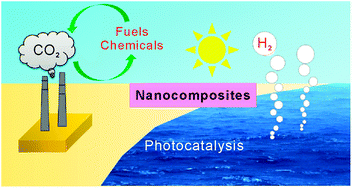Semiconductor-based nanocomposites for photocatalytic H2 production and CO2 conversion
Abstract
Semiconductor-based photocatalysis has attracted much attention in recent years because of its potential for solving energy and environmental problems that we are now facing. Among many photocatalytic reactions, the splitting of


 Please wait while we load your content...
Please wait while we load your content...